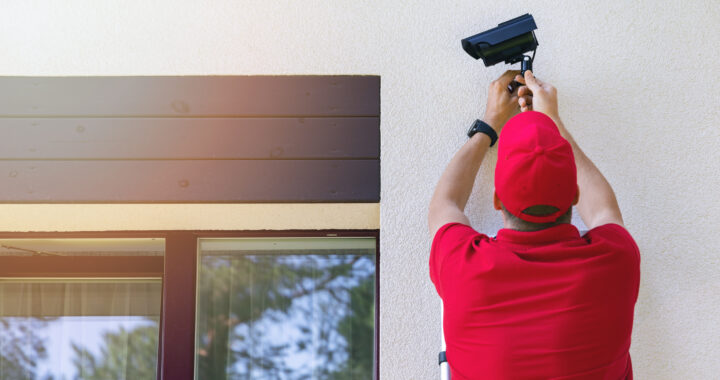As you may or may not know, RCI began as a company that primarily engineered equipment for telephone systems. This was back in the 70s. Since then, RCI has evolved into a full business technology company that offers all kinds of IT solutions. Today that can include installing a surveillance system for your business.
Over a decade ago, our clients began asking us about setting up cameras for them. Surveillance systems have increasingly become a major part of the business technology landscape. There are many reasons for installing a surveillance system and nearly as many varieties of product. But before you install your surveillance system its important to make sure you have a few questions answered.
Whenever talking about surveillance, I always stress the importance of making sure you’re working with a vendor who is licensed by the Virginia Department of Criminal Justice Services (or your state's equivalent). These security vendors will have what is called a DCJS license and is essential that you only work with a vendor who has one.
Beyond that most basic of qualifications you must ask yourself about the 3 Ps and 1 S: Purpose, Placement, Pixels and Storage before installing your surveillance system.
Table of Contents
Purpose of Installing a Surveillance System
Before setting up a surveillance system, you must decide its purpose. This may seem obvious but it may not be as obvious as it seems as first blush.
People and companies use surveillance for many things: monitoring employee behavior, crime prevention, record keeping and of course safety. I even once spoke to someone who wanted to set up surveillance cameras to catch a sunset!
Your reason for getting a surveillance system will matter for your plan in setting it up.
If your main goal is to identify people, your camera will be different than if your main goal is to monitor a safety procedure or prevent crime.
Placement
I once had a customer reach out to me regarding surveillance. As soon as we got to talking the customer told me “specifically, we’re looking for a fake camera to deter potential theft.”
I politely explained that I was not their guy as we only sold real surveillance systems. However, this example illustrates a customer who well understood the purpose of what they wanted.
In this customer’s case the purpose was to deter crime. If that was the only purpose, a simple camera (or maybe even their fake one) obviously may or may not have served their purpose.
If your purpose was to catch any potential criminal activity or safety violation you would need to make sure that every inch of territory is covered.
Finally, if your goal was to document the identity of someone who had broken in, having cameras well placed at entrances and exits would help you to achieve that goal.
Pixels
The goals of your surveillance system and the placement of your cameras will also influence the quality of camera you purchase (or pixels).
If all you need is a general idea of whether there has been movement in an area you will not need the same quality of camera as if you want to be able to read a license plate or count the
The quality of picture is determined by the number of pixels a camera records a picture in. More pixels equals higher quality.
Storage and Monitoring
Finally, the last thing to consider when installing a surveillance system is storage.
If you mostly need surveillance to have footage after a safety incident, you will not need that much storage. 30 days should do the trick. On the other hand, if you are trying to monitor inventory to catch potential theft and you are monitoring a large facility where a theft may not be discovered right away, you may need to have more storage available.
Some employers may even require footage to be shared for up to a year.
The storage capacity of your NVR for your surveillance system is one of the largest factors in determining the price of your overall system.
Factors to consider when determining the amount of storage you will need to cover your required time frame include most obviously, how long you want to store footage, hours that the facility is open and whether or not you will be using motion-triggered recording.
While you may not have control of the hours of your facility or how long you are required to store footage, you can reduce the amount of storage required by only recording when motion is detected.
When recording at a facility that is not open 24/7 motion detecting can have a large affect on the amount of storage needed.
Along with the amount of storage required for the NVR in your surveillance system, you will want to consider who will have access to monitoring the footage both in real time and after recording.
The people who have access to recorded footage can be determined by simply programming who has access to the GUI.
When it comes to real time monitoring, often a facility will have a TV monitor on site which a dedicated security guard monitors or a manager or other employee can see at a glance.
It is also possible for dedicated personnel to have remote access to real time footage through an internet GUI or smart phone app.
These days, when it comes to surveillance, if you dream it you can do it. So you just need to figure out what your priorities are and how much your budget is.
If you're installing a surveillance system for your business think about the purpose it will be serving, then call a certified DCJS security professional. At this point you will be more well prepared than 90% of callers!



